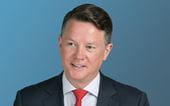- Home
- Blogs
IPEC grants summary judgment in trade mark infringement action involving healthcare services
Author
Browse this blog post
Related news and insights
Publications: 14 March 2024
Infringing gin part II: Court of Appeal victory for M&S against Aldi’s copycat design
News: 26 February 2024
Allen & Overy grows global IP practice with hire of life sciences specialist, Gemma Barrett
Blog Post: 04 January 2024
The EU Cyber Resilience Act proposal – What You Need to Know
Publications: 02 January 2024
Podcast: The power of synthetic media in advertising and mitigating risks from generative AI
In a recent decision of the Intellectual Property Enterprise Court of England and Wales, His Honour Judge Hacon granted summary judgment against a recruitment consultancy business operating in the healthcare sector.
The judgment is straightforward but raises a couple of useful points.
- HHJ Hacon observed that a court assessing likelihood of confusion under section 10(2) of the Trade Marks Act may “where appropriate” come to a view without witness evidence. So, where the case is not technically challenging enough to justify the need for witness evidence, it seems that the court will make a decision on its own. In this case, E-Spire came unstuck trying to argue otherwise.
- Only running your strongest claim in a summary judgment application may curry favour with the court. The other pleaded claims may add nothing to the application and over-complicate.
The facts of the case were simple. The applicant, Spire Healthcare, ran private hospitals in the UK and owned three UK trade marks containing the word “Spire” registered with respect to services in class 44. The defendant, E-Spire, is a business that recruits and provides staff on a temporary basis to corporate clients, including in the healthcare sector.
Spire Healthcare claimed trade mark infringement (ss 10(1), (2) and (3) Trade Marks Act 1994) and passing off in the use of the “E-Spire” name. “Helpfully” (as the Judge remarked), Spire Healthcare focussed on s. 10(2) in their application. In their defence, E-Spire argued that they offered personal care services and not the medical, nursing care and other services covered by Spire Healthcare’s trade marks. E-Spire pointed to health and social care regulations in which healthcare services and personal care services had different definitions and argued that expert evidence would be needed to assess the differences and any likelihood of confusion.
HHJ Hacon was not persuaded by E-Spire’s arguments and granted summary judgment for a number of reasons. First, it was clear from E-Spire’s advertising that it was offering not only personal carer services but also the services of medically qualified individuals, such as nurses. The services offered by E-Spire were therefore “extremely similar” to the services covered by Spire Healthcare’s trade marks. Second, the “E-Spire” name and the trade marks were visually and aurally very close and conceptually similar. Finally, a court could come to a view as to likelihood of confusion, without the assistance of expert or fact witnesses, by simply putting itself in the place of the average consumer. HHJ Hacon concluded that there was no real prospect of evidence at trial reversing his conclusion on the current evidence, which was that there was at least a likelihood of confusion under section 10(2).
This post was originally co-authored by Tom Brazier.
